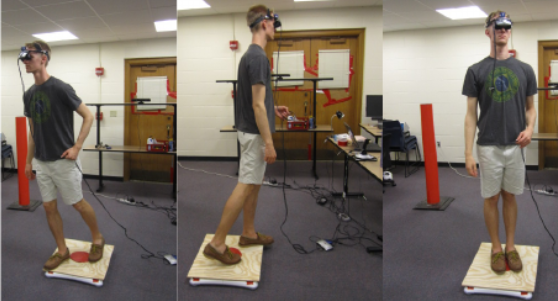There are several Virtual Reality (VR) locomotion techniques, such as teleportation, walking-in-place and reorientation. A method that is not so commonly seen is perhaps leaning, where the user physically leans or tilts in order to move the user forward in a VR space. It allows for moving in a large virtual environment without much physical exertion and not a lot of physical space is required. Furthermore, it could be relatively inexpensive with Nintendo Wii Fit Balance Boards (100 USD) [1].

Compared to the walking-in-place technique, users also have similar spatial awareness when using leaning to navigate a VR world [1]. As spatial awareness is our natural ability to maintain our body orientation and position relative to our surroundings, it is important in order for users to successfully navigate through a large VR environment.
Leaning to move around in VR may even be preferable to walking-in-place as it could enable the user to explore a large area in the virtual world a lot more quickly and effortlessly as compared to walking-in-place [1].
Personally, I feel that this would be quite an interesting way to navigate a VR environment, and it may feel natural as it could be somewhat similar to the leaning motion in sports like surfing and skiing. Expanding on this idea, I would suggest using the hand controllers to allow users to increase or decrease their movement speed while leaning. This may be a more accurate and effective method than determining the user’s speed based on how much they lean. Some users may also feel physically uncomfortable to tilt their body too much forward or backward or worry that they may fall over (especially because they are not able to view their physical environment with a VR headset on). Adjusting the movement speed using the input from the hand controller could be gradual and also tied with the leaning direction of the user. For instance, after the user had pressed the button to increase their speed, if they choose to lean backwards, the speed could slowly decrease as well, without another input from the user. This may also feel more natural for the user.
Reference:
[1] Human joystick: Wii-leaning to translate in large virtual environments
